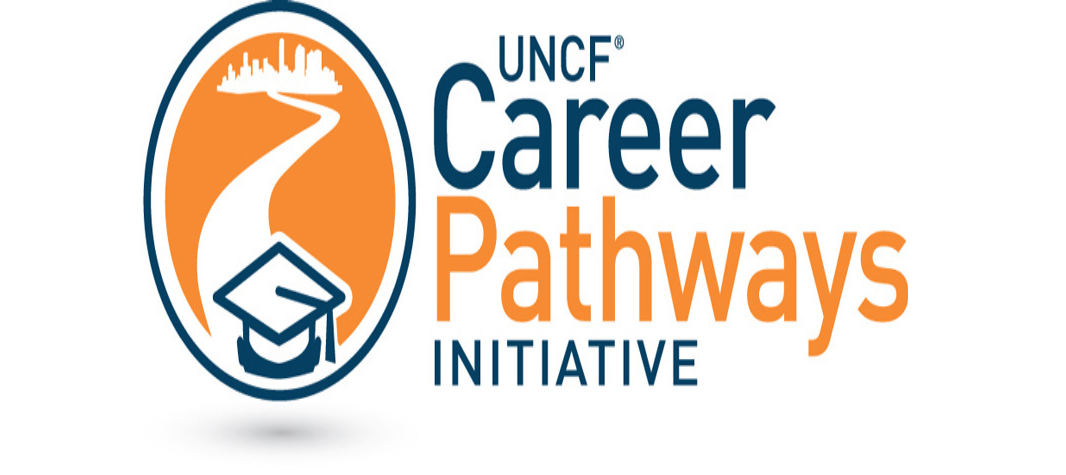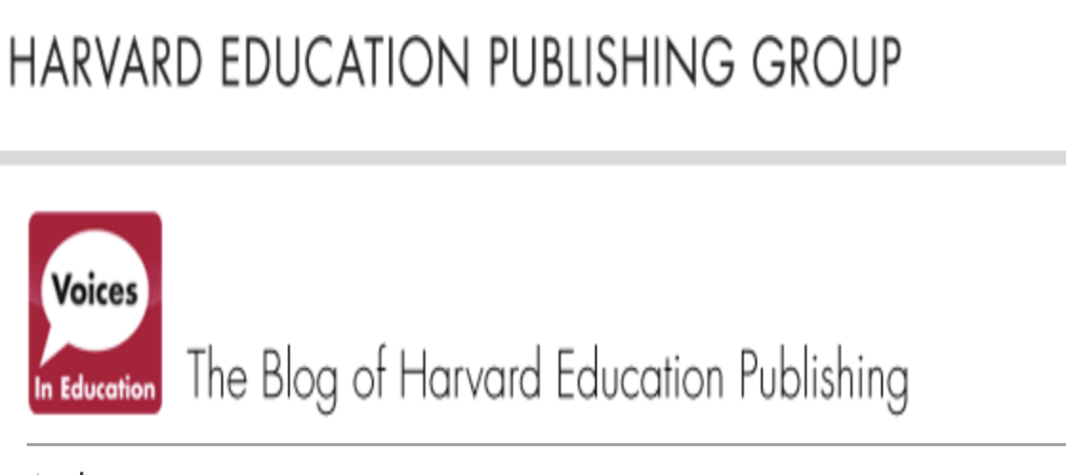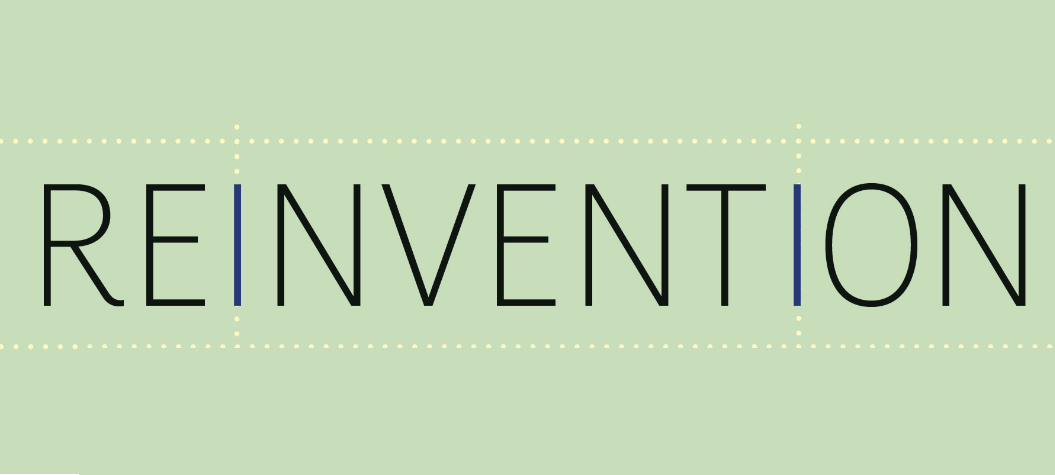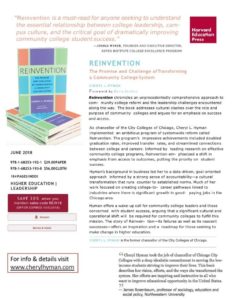
Cheryl Hyman to lead Gates Foundation’s Pathways Strategy. Read the Foundation’s Pathways blog post here.

Cheryl Hyman to lead Gates Foundation’s Pathways Strategy. Read the Foundation’s Pathways blog post here.

Cheryl L. Hyman (CS ’96), vice provost at Arizona State University (ASU), has been elected to the Illinois Institute of Technology Board of Trustees. Hyman’s illustrious background in educational and executive leadership will help Illinois Tech in its mission to provide a transformative education that empowers students to find career success.
“I am deeply honored to join the Illinois Tech Board of Trustees,” said Hyman. “Illinois Tech ignited my passion for lifelong learning and provided me with a strong foundation that has propelled my career. I’m eager to give back to the university that gave me so much; I’m wholeheartedly committed to advancing Illinois Tech’s mission and catalyzing its boundless potential.”
Before joining ASU in 2019, Hyman served as chancellor of the City Colleges of Chicago for seven years, leading and advocating for the success of over 100,000 students annually while overseeing a balanced budget of $700 million. During her tenure, Hyman instituted the “Reinvention” program, designed to increase completion and student success, enhance the transition rate to bachelor’s degree programs, bolster the outcomes for students requiring additional academic support, and elevate the progression of adult learners and English as a Second Language students to collegiate-level classes. Under her leadership, the graduation rate more than doubled and the number of degrees awarded was the highest in City Colleges’ history. Hyman was also named one of America’s Ten Most Innovative College Presidents by Washington Monthly magazine in 2015. During her tenure, she implemented College to Careers, a program partnering City Colleges faculty and staff with industry experts to help bridge the gaps between providing affordable means of building the skills employers seek and workplace demands.
Hyman’s memoir, Reinvention: The Promise and Challenge of Transforming a Community College System (Harvard Educational Press, 2018), captures her challenges and triumphs leading City Colleges, underlining her tireless work ethic, and passion for improving educational accessibility and quality.
As vice provost at ASU, Hyman has continued her work in reshaping the educational landscape through initiatives like MyPath2ASU, a technology solution that aims to smooth transitions for transfer students. Hyman oversees numerous high-profile, grant-funded projects dedicated to improving the mobility of learning, partnering with other academic institutions, and ensuring that students have the resources and a pathway to succeed at ASU.
“Cheryl is a world-renowned leader in forging academic partnerships and enhancing student mobility, and her expertise and wise counsel will help guide Illinois Tech as it builds on its founding commitment to fuel technology-oriented education for all,” said Illinois Tech President Raj Echambadi. “Our whole university community is honored to collaborate with her as we continue to reimagine higher education here in Chicago and across the world.”
Hyman has also performed extensive community work as part of the Illinois Community College Board, Complete College America, the Chicago History Museum, the Commercial Club of Chicago, the Economic Club of Chicago, and the Urban Institute’s U.S. Partnership on Mobility from Poverty. She previously served on the Board of The Night Ministry, an organization focused on poverty and homelessness, and as a court-appointed special advocate for Illinois children. She has been named one of Arizona’s most influential women, and she serves as chairperson for Arizona Women in Higher Education and the Board of Directors of Big Brothers, Big Sisters of Central Arizona.
“It’s a privilege to welcome an alumna of Cheryl’s caliber to our board,” said Michael P. Galvin (LAW ’78), chair of the Illinois Tech Board of Trustees. “Her profound experiences—spanning from groundbreaking academic initiatives to transformative community engagements—promise a luminous future for the university and for our students.”
Hyman began her career at ComEd, where she ultimately became vice president in her 14-year tenure. In addition to her bachelor’s degree in computer science from Illinois Tech, Hyman holds an associate degree from Olive-Harvey College, a master’s degree in community development and certification in nonprofit management from North Park University, and an executive M.B.A. from Northwestern University’s Kellogg School of Management.

Honored to have co-authored an article for Diverse Issues in Higher Education on the ‘Corona Swirl’ and ensuring that higher education creates clear pathways to degrees. We must act now to protect students and guard against even more pain caused by the pandemic.
Read the full article here.

I’m honored to be part of the amazing group of women selected by AZ Business magazine as the Most Influential Women in Arizona Business for 2020. Read more here.

As many of you have already heard, I have begun a new role at Arizona State University—a new role which allows me to continue pursuing my two passions in higher education: innovation and providing new opportunities to the more than half of all American adults who hold no postsecondary credentials.
Like the community college sector from which I came, Arizona State University is committed to opening the doors to opportunity to the entire spectrum of society, regardless of their zip code or their family resources. As part of that charge, ASU has worked hard to build pathways that allow community college students to seamlessly transition to the university and successfully earn a bachelor’s degree. But as an institution, ASU also is committed to improving the lives of the 61 percent of community college students nationwide who do not receive any credential within six years, as well as the 52 percent of all American adults who hold no postsecondary credentials.
That’s why as vice provost for academic alliances, I see our partnerships evolving into platforms—a continuum of learning opportunities which include ASU and other institutions, including nontraditional providers, brought together by technology which will help learners navigate the growing complexity of higher education and the skills they will need throughout their lives.
I have a vision of ASU as a connector — connecting students to their next opportunity. No one institution will have the answer to everything every student needs as they navigate the complexity of higher education. For all of our institutions to meet the needs of all learners, we’ll need new connections to help improve the pathways they need to navigate to access ongoing learning and move to the next phases of their lives.
ASU is well positioned to meet this challenge. We were just named the most innovative college in America by U.S. News and World Report for the fifth year running. I came here from the community college sector because of the institution’s commitment to access and opportunity, and its willingness to make the dramatic changes needed throughout higher education if it is to remain relevant in our rapidly changing world. I’m excited about the opportunities to work together that lie ahead, and I look forward to sharing the journey.

I recently had the honor of delivering a keynote address at the third annual UNCF Career Pathways Initiative Convening & Data Institute. In my remarks, I discussed the value of purposeful disruption as a tool to help leaders address the many challenges that HBCUs — and all of higher education — face today.
A transcript of my remarks is available on my speeches page.
Afterwards, I sat down for a fireside chat with UNCF President & CEO Dr. Michael L. Lomax, during which we discussed the challenges leaders face when managing change.

Last month, I gave a commencement speech at Southland College Prep Charter High School, outside of my hometown of Chicago. While I was focused on the graduating class before me, one of the points I made—about overcoming obstacles—is applicable to all of us, at all stages of our personal and professional lives.
For all of us, overcoming obstacles demands resilience, fortitude, and fearlessness. But I like to say that in the mess lies the message. Amid chaos and change, we can find our place of purpose, the sweet spot where we can have our greatest impact.
How? First, fight each day like your life depends on it. Refuse to take “no” for an answer. And when you find yourself down, take a deep breath and believe bigger.
Second, challenge the limiting beliefs that hold you back. Get in control of what you believe. Make sure your worst enemy is not living between your two ears. You have to stop yourself from stopping yourself and choose actions that are in your own best interest.
Third, choose your circle carefully. It is not about how many people you know, but what company you keep. Your inner circle should be filled with people with their own testimony; they should be able to share with you how they have come out on the other side of trials and tribulations. Be very weary of people who claim to have not faced any challenges because either they have and they’re in denial, which does no one any good, or they’re about to and you want to avoid being caught in the middle.
Fourth, feel fear and do it anyway. If it scares you, it usually means you are on to something. Leap into your life with excitement and enthusiasm. Step out on faith, even if it means making a mistake. God, the universe, spirit – whatever you call your guiding light – offers enough grace to put you right where you need to be. What is worse? Not taking the risk, not leaping, and living with regret? One of my favorite motivational videos is Steve Harvey’s “Jump” because it lets you know that everything you want is on the other side of fear.
Fifth, invest in yourself. It is here you will see the greatest returns. Realize that you have nothing to lose and everything to gain. everything you need to be successful is already inside you. All you have to do is honor your intuition and say, “no” to whomever or whatever does not feel right to you.
And for the sixth and final way you can believe bigger: fail early and often. I am inspired by Michael Jordan’s iconic words shared in an ESPN interview: “I’ve missed more than 9,000 shots in my career. I’ve lost almost 300 games. Twenty-six times, I’ve been trusted to take the game winning shot and missed. I’ve failed over and over and over again in my life. And that is why I succeed.”
Michael Jordan missed 9,000 shots in regulation play. Imagine how many more shots he missed during practice! Perhaps tens of thousands of shots that no one saw.
The difference between average people and high achievers is their perception of, and response to, failure. Failing is inevitable, but using failure as a stepping stone takes guts, persistence and an unshakeable self-confidence.
We all possess these skills. As motivational speaker Zig Ziglar says, it’s not how far you fall, but how high you bounce that counts.
Believe bigger.
This article was originally posted on LinkedIn.

I contributed a post to Voices in Education, the blog of Harvard Education Publishing, which earlier this month released my book. Building on themes in Reinvention: The Promise and Challenge of Transforming a Community College System, I make the case for why all of us in higher education must move our institutions more quickly to adapt to the disruptive changes around us:
Though it’s encouraging to see institutions implement initiatives that are more responsive to the needs of students, employers, and communities, their leaders must reconsider outmoded ways of thinking and acting, as utilizing old frameworks will only deliver limited impact. We must recognize that our current students continue to struggle with confusing systems and structures that make it difficult for them to navigate our institutions. Their lives depend on our ability to help them navigate the system and gain the relevant skills they need to improve their own futures.
Among the principles that drive a systemic and systematic approach to change which I discuss in my book and the blog post are insistence on full relevance, strategic use of data, personalized information and planning, best practice operations and training, and cultural shifts.
Read more at Voices in Education, the Harvard Education Publishing blog, here.

I’m excited to share with you that the time has finally come—my book, Reinvention: The Promise and Challenge of Transforming a Community College System, officially hits bookshelves today, Tuesday, June 5th. Writing and sharing the news about this book has been a life-changing experience and I have many of you to thank for it.
Your support and feedback has been instrumental in helping me on my journey as I continue to champion change in higher education—for our students and our communities.
For more information about the book and ordering options, click here.
Cheryl

(Click here to enlarge image.)

(This post was originally published on LinkedIn).
In virtually everything in life, information matters, but insight matters more. That’s in no small part due to the increasingly rapid pace of change in the word around us, which challenges us as leaders to assess different scenarios, identify the data that matters most, and provide others with the right infrastructure, support, and tools to act at the pace of the disruption around us.
I recently published a book, Reinvention: The Promises and Challenges of Transforming a Community College System, about my experience as chancellor of a large community college system. During my tenure, I didn’t think about writing a book about the experience. But my experiences as a student, corporate executive and later as the leader of an academic institution taught me some important lessons, including the one that permeates every chapter of my book– that we must move faster to transform our higher education system. The question we need to answer is do our traditional delivery models leave our students with too much debt and credentials that may have limited value in the workplace. While the experiences in my book are viewed through the lens of transforming a community college system, the principles can be applied more broadly.
We live in a rapidly changing society. Nothing is staying the same, including jobs and industries. As a result, the gap continues to widen between the demand for skilled workers and the availability of people to fill them, which in turn exacerbates our nation’s growing inequality. According to a recent study by the Center on Education and the Workforce at Georgetown University, there will be 165 million jobs in the economy by 2020, and 65 percent of those positions will require some form of postsecondary education.
Each year, the Manpower Group, a human resources consultancy, conducts a global survey of employers, the “Talent Shortage Survey.” Last year, they reported that 40 percent of employers globally had difficulty filling jobs due to lack of available talent with hard skills, workplace competencies and experience. Technology has fundamentally changed the way industries operate. As a result, companies are seeking what The New York Times best-selling author Seth Godin referred to as “linchpins;” individuals who have the potential to transform an organization because of their unique capabilities. But before these individuals can realize their potential as linchpins, they must first have access to relevant education—and by “relevant,” I mean an education which goes beyond the alphabet soup of degrees. Competency matters most. Degrees are only as good as the quality and relevance of the classes required to pass in order to earn them. Employers care about credentials and skills that have the ability to drive and transform their institutions.
For higher education to continue to play a significant role in closing the skills gap in the United States, we as a sector need to acknowledge that we have a problem—that for all our noteworthy efforts to focus our institutions around better supporting students and making their education more relevant, we are simply not moving as quickly as the disruptive forces around us. There are three significant trends that compel that we transform our education system in the U.S. and quickly:
1. Success is Equally as Important as Access: Community colleges and many four-year institutions were built on a paradigm of access, and with the growth of free college programs that provide free tuition to community college students in many states and cities across the country, we’re moving to a point where the first two years of college may someday be as universal as K-12 education has been for the last century. However, as community colleges continue to expand their ability to provide access, it’s also time to commit more fully to a paradigm of success. Many institutions have made impressive steps in this direction by providing a broader range of supports for students. To achieve success, institutions must commit to systemic and systematic change with measurable goals that leaders are held accountable to and are transparent about.
2. Relevance is key. Even if more college students are supported and attain a degree or credential, those efforts will not be fruitful if our institutions don’t offer a curriculum that is either tied directly to employment with not loss in future momentum or the ability to transfer to a four-year institution without loss of credit. As chancellor, one of the key initiatives that we (along with many other community colleges) implemented was the creation of pathways which provided students with a clear path between the classes/credits they earned and their academic/professional aspirations. The pathways concept has since spread across the country as a best practice, but it’s vital to ensure those pathways are relevant to the industries and employers our students want to become parts of, and supported by effective advising so students fully understand their options and how they connect with their life and career goals.
3. Disruption is on the horizon; it’s not “if” but “when”: The education market is estimated to be about $1.3 trillion, with $475 billion of that attributed to higher education. It’s important that the industry recognize that we are equally as ripe for disruption from non-traditional players as other industries. Consider what’s happened to the retail sector because of Amazon, the hotel/lodging industry because of Airbnb, and the taxi and limousine industry due to Uber and Lift. For the education sector, the increased validity and penetration of online courses, specialized technical training courses and free online education from resources such as altMBA are already a challenge. Unlike the private sector, in many cases higher-ed leaders are constrained by regulations and policies that don’t always constrain these disruptors in the same ways, creating even greater challenges—and the need to drive change beyond our campuses, but in our governing bodies as well.
Disruption is inevitable; but for leaders in every sector it is undeniably better to drive and capitalize on disruption from within rather than have it forced upon you. And we’re seeing exciting examples of transformation throughout higher education— statewide career pathways in Tennessee, the creation of a new community college in New York City focused on systems change, and programs offering free tuition for recent high school graduates and, at times, adult learners, in cities and states across the country. Writing this book reignited my commitment to speak up about the importance of revolutionizing our approach to higher education. Put simply, people’s lives depend on our ability to transform our system—too many are slipping through the cracks, getting lost in the system or receiving credentials with limited value. And with the pace of disruption around us, if we focus instead on piecemeal change, our students won’t stick around and wait for us to put our houses in order.